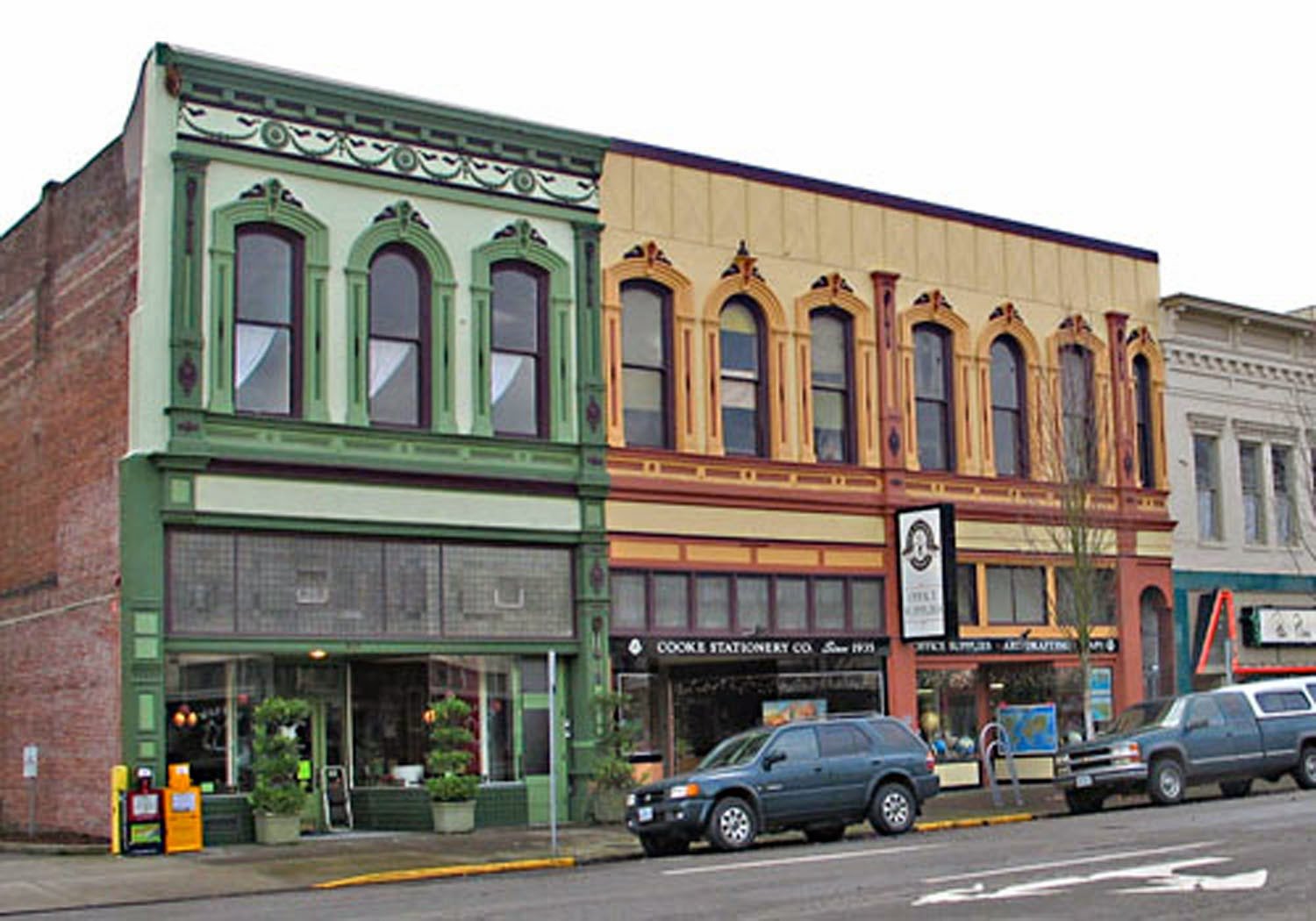World Events
- Cologne Cathedral is completed, 632 years after the the construction was begun in 1248.
- James Garfield, having served nine terms in the House of Representatives, is elected 21st President.
- Wabash, Indiana is the first electrically lit city in the world. The SS Columbia is lit up at the foot of Wall Street in New York City before sailing for Portland, Oregon via Cape Horn.
- Barnum and Bailey Circus is created. Bingo is invented.
- The first cash register is patented by James and John Ritty of Dayton, Ohio.
- The blizzard of 1880 is considered the most severe winter in our history, beginning in October and lasting into March, 1881: snow up to second floor windows and no transportation. A good reference is Laura Ingalls Wilder’s book, The Long Winter that tells of her own family’s efforts to survive.
- New American Books: A Tramp Abroad, Mark Twain and Ben Hur, Lew Wallace.
In Salem
Samuel Adolph constructs the brick, Italianate Adolph Block to replace wooden buildings destroyed by fire on that State Street site. It offered space for three businesses
When you visit
A renovation of this block in the 1990s has added a luncheon restaurant in the eastern half and loft apartments on the second floor. The 1868 Gill Building, also listed on the National Register, completes the photograph. The Gill Building has often been the site of a tavern, but it also has a more dignified history: the first Presbyterian congregation met here in 1869.
Other Events
- The city population reaches 2538. The city’s growth was accelerated by the expansion of agriculture and logging, and the continued development of markets for these products.
- T. B. Waite, the former Fire Chief, is elected mayor. By 1886 he had become a merchant with a hardware and farm machinery business at the northeast corner of Commercial and State Streets. A photograph of the Salem Stallion Show of that year (above) clearly shows the sign advertising his establishment above the Durbin Building and horses exhibited along State Street. On the south side of the street, from the foreground, are businesses named for the Patton and Adolph families (see the same Adolph building as featured photograph for 1880 ). In the distance the new First Methodist Church.
- The city council vacates Summer Street between Court and State Streets, allowing Willson Park to enlarge and become adjacent to the State House. Located in the original Willson land, and the exact center of city, it became the focus of many early photographs.
- Christian and Christina Frickey build a house and establish a nursery at what is now 1210 Garnet Street, just east of 12th Street and the railroad tracks. Penitentiary inmates helping clear the heavily forested land. The house, also photographed in 1978, is now designated as a Local Landmark in the NEN neighborhood.
- The Italianate Virgil Pringle House is built at 883 High Street, named for one of the early pioneers of the city. Virgil K. Pringle farmed, on his acres south of town (where Pringle School was built) but mostly operated a boot and shoe shop. In those days the lighter manufacturing trades were usually carried on in the home, and he had his shop in his home and had very prosperous business. We do not know where this shop was located, but it must have been on his Salem land near the creek named for him. In middle age, he spent a good deal of his time on his farm. The High Street residence was built late in his life when he was 76 year old ~ perhaps it was his “town house”. His daughter Emma, Mrs. John Hughes, built a home on the northwest corner of High and Oak streets, only a few block away. His funeral was in his “south Salem” home, presumably this one. A photograph of his widow, Pherne Brown Pringle, daughter of Tabitha Moffat Brown, is found with an article about her life, on Salem Lifelines. This residence achieved significan
ce as the Salem residence of Mark O. Hatfield and his family home while governor 1959-67. It is a National Register property in the Gaiety Hill/Bush’s Pasture Park Historic District. - A. E. Gilbert, brother of A.C. Gilbert, builds a Queen Anne house at what is now 1950 Water Street, then several miles north of town, now in the Highland neighborhood. In 1926, Walter G. and Margaret A. Baker purchased the property. In the 1930s Baker changed his name to Zero Polaire because he felt he had been “left out in the cold” in the matter of his family’s will. Mr. Polaire lived in the house into the late 1950s. It is now a Local Landmark in the Highland neighborhood.
- Situated near the southeast corner of Union and Cottage Streets in Salem, the LaFollette tree grew to be one of largest trees of its kind in Marion County. The Harry Widmers moved into the adjacent residence in 1905 and said the tree was big then. An old man about town named LaFollette told the Widmers he started the big tree about 1880 or earlier as a nut brought by wagon from Nebraska. In tree was fronted by the Heritage Tree Restaurant on Cottage Street. When this restaurant closed, the building sold and moved (c. 2006-7) to 2580 State Street. Despite many resident objections to the loss of the tree, the new owners cut it down.



2 Comments